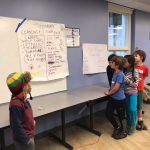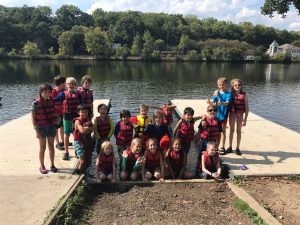Monthly Archives: October 2017
Compost . The Adventure Park
This week, we spent time studying compost, how it’s made and how it benefits the soil and the environment. The students looked at articles and an animation and drafted responses to questions, focusing on complete sentences and domain-specific vocabulary.
Lake Erie . Crafting Excellence . Compost
This week the class traveled to the Lake Erie Metropark Marina to study Lake Erie, the body of water that the Huron River empties into. When we think about the health of our water it’s important to think about the bodies of water and communities both up river and down river from us.
Argo Cascades . The Water Cycle . Great Lakes . Pascal’s Triangle
We began the week on the Huron River, specifically the Argo Cascades. The class, along with extra chaperones (Thanks, Dan and Jenna!) rented tubes and enjoyed a gorgeous day in the sun. For many, it was their first experience there and most left adamant about bringing their families back. In the coming weeks, we will be looking into the history of the cascades and how economic and environmental concerns inform land use decisions. The trip was a joyous one as well and was designed with the hope of building positive connections between the students and the river. This will make our work with the river more meaningful beyond an abstract appreciation.
Identity . Water . The Little Prince . Mathematical Reasoning
This week we worked on writing prompts as a way to connect with aspects of our identity and what matters to us. They included creating a list of rules for being us at this age, describing moments when we were happiest and imagining our lives as a video game and ascribing points to the things that bring us joy, whether that was based on experiences or overcoming obstacles. We will channel these into our work on our 6 Word Memoirs.
- Oceans
- Ice Caps and Glaciers
- Groundwater
- Rivers, Lakes and Streams
- The Atmosphere
- Reporter – Summarizing
- Profiler – Character Analysis
- Curator – Finding Interesting or Confusing Words or Phrases
- Detective – Asking Questions and Making Connections


































































